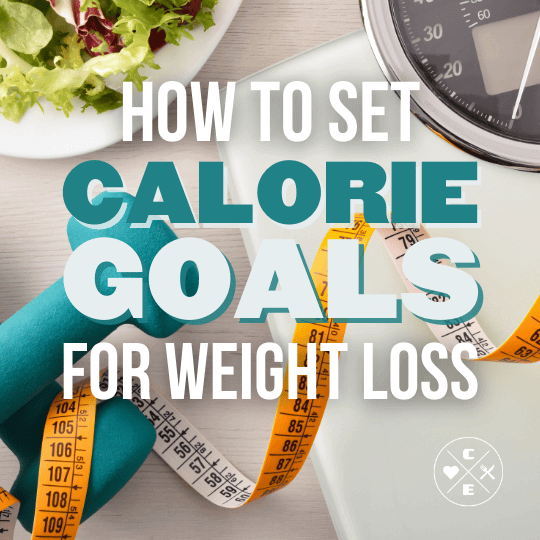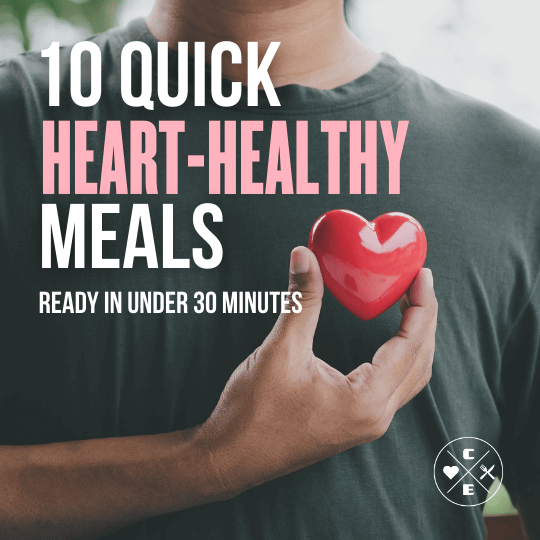Why calorie deficits work (and common myths)
Weight change is driven by energy balance over time. But the old “3,500 calories = 1 lb” rule overestimates loss because your body adapts (metabolism and activity shift as you lose). Use dynamic tools like NIH’s Body Weight Planner to set realistic expectations instead of relying on static math. For most people, a modest daily deficit paired with activity is the sweet spot—sustainable and protective of lean mass.
Step 1 — Pick a safe, realistic rate of loss
- Target ~1–2 lb per week for most adults; slower is fine. This pace is widely recommended for sustainability and long-term maintenance.
- Think in 3–6-month blocks: A 5–10% loss is a meaningful clinical goal that already improves cardiometabolic health.
Step 2 — Estimate your maintenance (TDEE)
- Calculate resting metabolic rate with a validated formula like Mifflin–St Jeor.
- Multiply by an activity factor (sedentary → very active) to estimate TDEE (total daily energy expenditure).
- Prefer dynamic planning: cross-check with the NIH Body Weight Planner, which accounts for adaptation over time.
Step 3 — Choose your daily deficit
Evidence-based starting points
- Moderate deficit: ~500–750 kcal/day (typical guideline range) — often translates to about 1–2 lb/week initially.
- Calorie targets: Many adults land near 1,200–1,500 kcal/day (women) or 1,500–1,800 kcal/day (men) to achieve a ≥500 kcal deficit, but personalize to your size, activity, and hunger.
- Very-low-calorie diets (<800 kcal/day) are medical-only tools and not DIY approaches.
Step 4 — Set protein, fiber, and movement
- Protein: Aim around ~1.6 g/kg/day (0.7 g/lb) to help preserve lean mass while dieting; athletic or lean/active folks may benefit from the upper end of ~1.6–2.2 g/kg/day.
- Fiber: A simple rule is ~14 g per 1,000 kcal (e.g., 25–38 g/day for many adults). Prioritize veggies, fruit, legumes, and whole grains.
- Resistance training + NEAT: Lift 2–4×/week and boost daily movement (walks, steps, standing) to protect muscle and increase expenditure.
Want help hitting protein and fiber while staying in a deficit? Explore our calorie-controlled meal plans, stock up on protein-forward snacks, and check macros on our Nutrition Info page. Also see: high-protein diet guide and how much exercise per day?
Step 5 — Monitor & adjust like a pro
- Track averages: Weigh 3–7 mornings/week and use a weekly average to smooth water swings.
- Adjust every 2–4 weeks: If your average loss stalls, nudge calories down ~100–200/day or add activity. Expect some metabolic & activity adaptation.
- Guardrails: If hunger, energy, or training quality tanks, pull back the deficit or increase protein/fiber and meal timing.
Worked example (plug-and-play)
- Estimate TDEE with Mifflin–St Jeor → multiply by activity factor.
- Pick a deficit (e.g., −500 kcal/day) to aim for ~1 lb/week initially.
- Set macros: protein ~1.6 g/kg, fats/carbs as preferred; hit fiber ~14 g/1,000 kcal.
- Strength train 2–4×/week; add steps to boost NEAT.
- Review weight trends at 2–4 weeks; adjust as needed. Use the NIH planner to sanity-check timelines.
How Clean Eatz Kitchen can help
We do the heavy lifting (pun intended). Choose a calorie-controlled plan, add high-protein snacks, and browse Nutrition Info to mix and match meals that fit your daily budget.
FAQs
Is 1,200 calories too low?
For many adults, yes—it can be too aggressive and hard to sustain. Typical guideline ranges suggest ~1,200–1,500 kcal for women and ~1,500–1,800 kcal for men when that produces a ≥500 kcal deficit. Personalize your target and prioritize adherence, protein, and nutrient density; seek clinician input if you have medical conditions.
Do I have to hit a specific macro split?
No single split is “best” if calories and protein are controlled. Choose carbs/fats you can stick with and that support your training and appetite.
Why did my loss slow down?
As you lose weight, energy needs and daily movement often drop (consciously or not). That reduces your deficit. Use step goals, resistance training, and small calorie tweaks to keep momentum.
Can I “speed it up” with supplements?
No supplement meaningfully replaces a well-set calorie plan plus protein, fiber, and training. If you use caffeine or other products, review safety and talk to a clinician first.
References
- CDC — Healthy weight loss: ~1–2 lb/week and benefits of modest loss. Overview.
- 2013 AHA/ACC/TOS Guideline — Energy deficit methods (500–750 kcal/day; typical calorie ranges; VLCD medical-only). Circulation | PDF.
- NHLBI/NIH — Body Weight Planner (adaptive model). About & tool and model background.
- Mifflin MD, St Jeor ST. A new predictive equation for REE. Am J Clin Nutr, 1990.
- Hall KD, Chow CC. Why the “3,500-kcal rule” is wrong (dynamic adaptation). Int J Obes, 2013.
- Levine JA. Non-exercise activity thermogenesis (NEAT) primer. Am J Physiol, 2004.
- Protein for lean-mass retention/gains: Morton RW et al. meta-analysis (~1.6 g/kg/day threshold). Br J Sports Med, 2018. See also ISSN position stand (Jäger et al., 2017): overview.
- Higher protein during energy deficit improves body comp in trained adults (Longland et al.). Am J Clin Nutr, 2016.
- Fiber: Adequate Intake ≈14 g/1,000 kcal (adults). J Acad Nutr Diet, 2015.
Educational content only; not medical advice.




